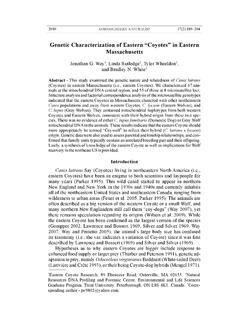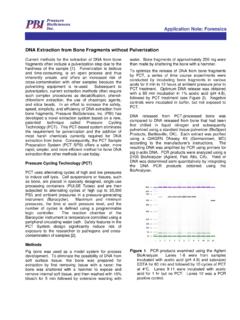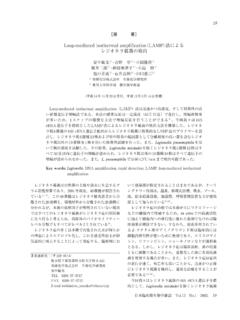Transcription of Production, concentration and titration of …
1 production , concentration and titration ofpseudotyped HIV-1-based lentiviral vectorsRobert H Kutner1, Xian-Yang Zhang1& Jakob Reiser1,21 Gene Therapy Program, Department of Medicine, Louisiana State University Health Sciences Center, 533 Bolivar Street, New Orleans, Louisiana 70112, Foodand Drug Administration, Center for Biologics Evaluation and Research, Division of Cellular and Gene Therapies, 1401 Rockville Pike, HFM-725, Rockville, Maryland20852, USA. Correspondence should be addressed to online 19 March 2009; the past decade, lentiviral vectors have emerged as powerful tools for transgene delivery.
2 The use of lentiviral vectors hasbecome commonplace and applications in the fields of neuroscience, hematology, developmental biology, stem cell biology andtransgenesis are rapidly emerging. Also, lentiviral vectors are at present being explored in the context of human clinical trials. Herewe describe improved protocols to generate highly concentrated lentiviral vector pseudotypes involving different envelopeglycoproteins. In this protocol, vector stocks are prepared by transient transfection using standard cell culture media or serum-freemedia.
3 Such stocks are then concentrated by ultracentrifugation and/or ion exchange chromatography, or by precipitation usingpolyethylene glycol 6000, resulting in vector titers of up to 1010transducing units per milliliter and above. We also provide reliablereal-time PCR protocols to titrate lentiviral vectors based on proviral DNA copies present in genomic DNA extracted from transducedcells or on vector RNA. These production / concentration methods result in high-titer vector preparations that show reduced toxicitycompared with lentiviral vectors produced using standard protocols involving ultracentrifugation-based methods.
4 The vectorproduction and titration protocol described here can be completed within 8 protocol described here outlines facile procedures to prepare,concentrate and titrate lentiviral vectors based on HIV-1. Lentiviralvectors are traditionally produced by transient cotransfection ofhuman embryonic kidney 293T cells using recombinant plasmidscarrying transgene sequences, sequences encoding helper (packa-ging) functions and sequences encoding Env glycoproteins, respec-tively. The vesicular stomatitis virus Env glycoprotein (VSV-G) istypically used1 4, although a wide range of alternative glycoproteinshave the ability to associate with the vector s membrane, a processthat is referred to as pseudotyping5.
5 Typical vector titers range from106to 107transducing units per milliliter. Increased titers can beachieved by physical concentration . This has opened up the way togenerate highly concentrated vector stocks forin vivoapplica-tions6,7. However, lentiviral vectors bearing VSV-G at high concen-trations can be cytotoxic8. Fortunately, such toxicity issues can bepartially overcome by using alternative pseudotypes9,10or improvedvector concentration /purification procedures, including protocolsbased on anion exchange protocols for lentiviral vector concentration involvingmembrane-based anion exchange chromatography or precipitationusing polyethylene glycol 6000 (PEG 6000).
6 These methods werefound to result in vector stocks showing reduced toxicity comparedwith the standard protocols involving widespread use of VSV-G to pseudotype lentiviral vectorshas made this glycoprotein the standard against which the useful-ness of other viral glycoproteins to form pseudotypes are com-pared. Comparison of pseudotype efficiency inevitably meanscomparing vector titers on cell linesin vitro. This brings up twoimportant issues: (i) techniques to determine lentiviral vector titersand (ii) cell lines chosen for titration of such vectors.
7 There aredifferent measures used to determine lentiviral vector titers. Someof them are based on the number of vector particles present in avector stock, whereas others are derived from the number ofproviral copies in transduced target cells. Vector particle numberscan be determined using real-time PCR based on strong-stopcDNA present in virions11. Alternatively, the amount of virusproteins present in vector cores, such as p24, are determined byELISA to arrive at relative particle titers12.
8 Unfortunately, titersbased on p24 tend to be unreliable10,13. Functional titration assaysare based on vector-encoded reporter gene expression. For exam-ple, vectors encoding green fluorescent protein (EGFP) have beentitrated using fluorescence-activated cell sorting (FACS) vectors that do not contain a reporter gene, proviral DNA copynumbers determined by real-time PCR using DNA extracted fromtransduced cells have been used to determine vector titers9,14 of these methods produces different results, close attentionmust be paid to the titration method used.
9 Here we presentdetailed real-time PCR protocols to titrate lentiviral vectors basedon either vector DNA sequences present in transduced cell DNA orvector RNA present in vector particles. Advantages of vector DNA-based titration methods are that they are independent of thetransgene and promoter sequences being used. Thus, they aregenerally applicable. titration methods based on RNA derivedfrom vector particles are particularly useful for adjusting lentiviralvector stocks bearing alternative Env glycoproteins.
10 Also, they aremore reliable than titration assays based on p24 (see ref. 10). Again,it must be kept in mind that assays based on vector-derived RNA oron p24 do not reflect functional vector significant for titration is the cell line used because receptorsfor a given Env glycoprotein may vary from cell line to cell line,possibly producing a falsely depressedtiter. Frequently, a given cell line(such as HeLa or 293 cells) is chosen because it is considered generallypermissive to transduction rather than representing the naturaltropism of the virus from which the glycoprotein was , results produced with a given cell line or type of cellin vitrodo not always translate into comparable resultsin vivodue to puorG gnihsilbuP erutaN 9002 :ptthNATURE PROTOCOLS| |2009|495 PROTOCOL factors such as complement-mediated inactivation of vectors.







